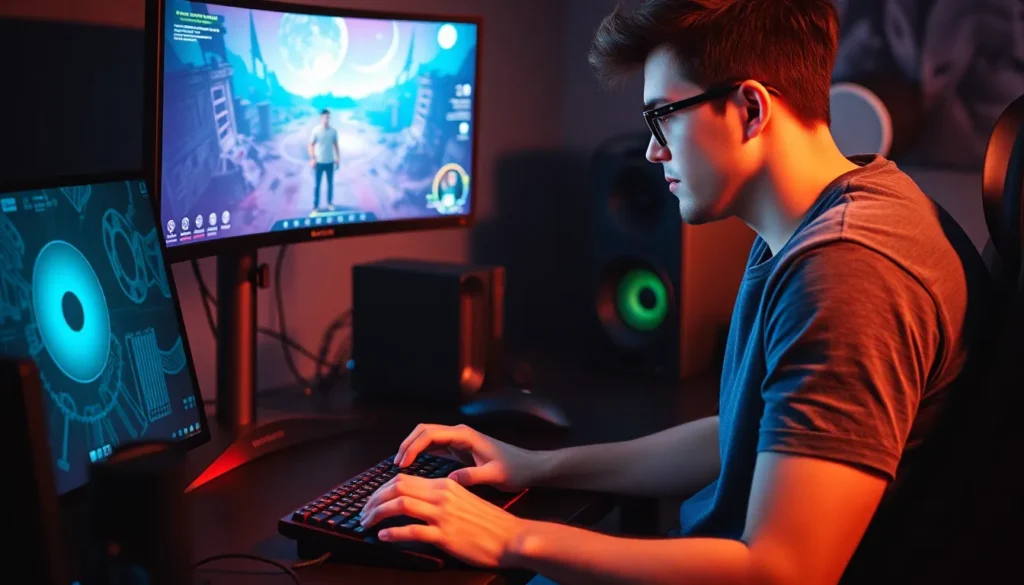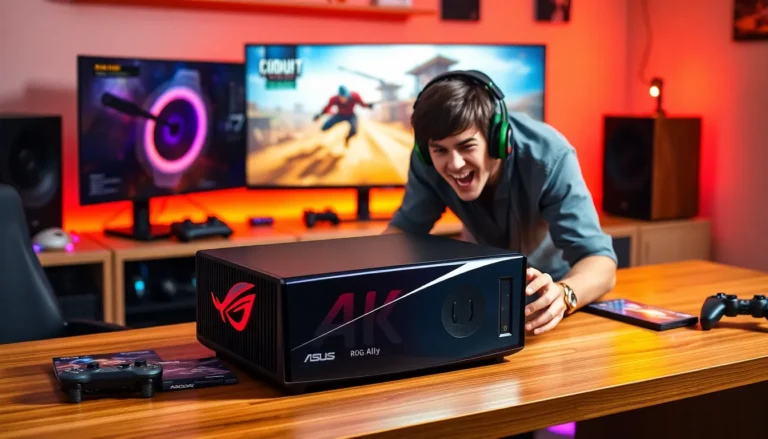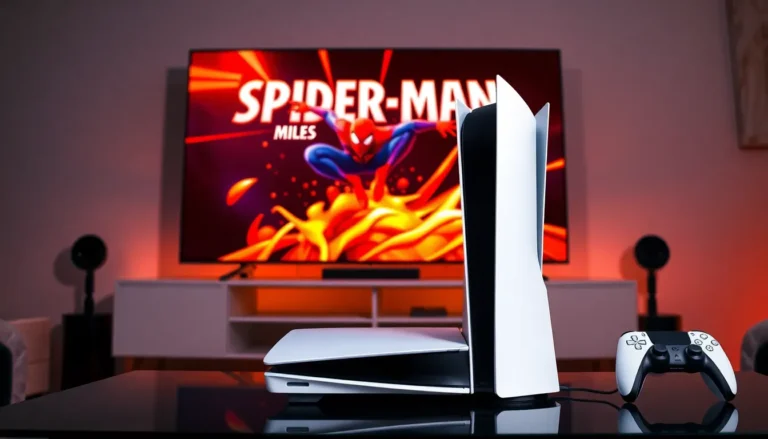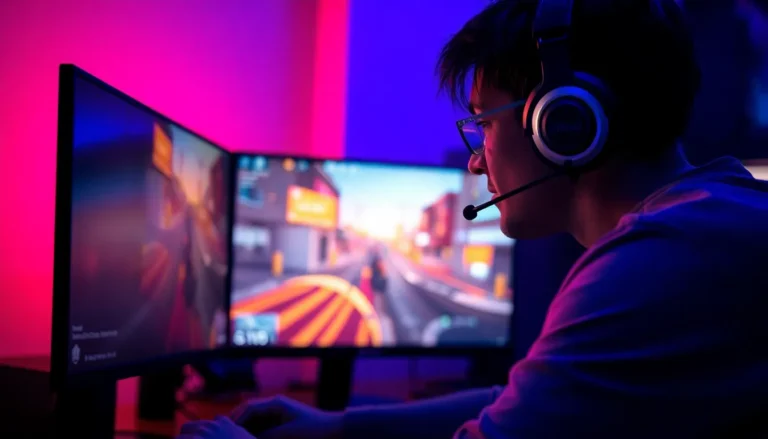In the world of gaming, every frame counts. Gamers often find themselves on a quest for that elusive perfect performance, where every pixel dances smoothly across the screen. Enter RAM, the unsung hero of gaming setups. But does cranking up the RAM truly boost frames per second, or is it just a techie myth that’s been passed around like a bad joke?
Picture this: you’re in an epic battle, and your character freezes mid-jump because your system can’t keep up. Frustrating, right? More RAM might just be the secret sauce to prevent those heart-stopping moments. But before you rush out to buy the latest RAM sticks, let’s dive into the nitty-gritty of how memory impacts your gaming experience and whether it’s the magic bullet for that sweet, sweet FPS boost.
Table of Contents
ToggleUnderstanding FPS and RAM
Frames per second (FPS) measures how many individual frames a game displays in one second. Higher FPS generally yields smoother gameplay, creating a more enjoyable experience. Gamers notice that FPS significantly impacts responsiveness and visual quality. Various factors, including hardware and software settings, influence FPS performance.
What Is FPS?
FPS represents the fluidity of motion in video games. A common target for smooth gaming is 60 FPS, which appears seamless to most players. Lower FPS can lead to choppy graphics, resulting in disrupted gameplay. Many competitive gamers aim for FPS rates above 120 to gain a competitive edge. Certain games are designed to run at higher FPS, enhancing the user’s immersion in the experience.
What Is RAM?
RAM, or random access memory, temporarily stores data for quick access by the CPU. It plays a crucial role in multitasking and loading applications without lag. Higher amounts of RAM can improve system performance, particularly when running demanding programs. While playing memory-intensive games, sufficient RAM helps maintain performance stability. Insufficient RAM can lead to stuttering and frame drops, impacting overall gaming enjoyment.
The Relationship Between RAM and FPS
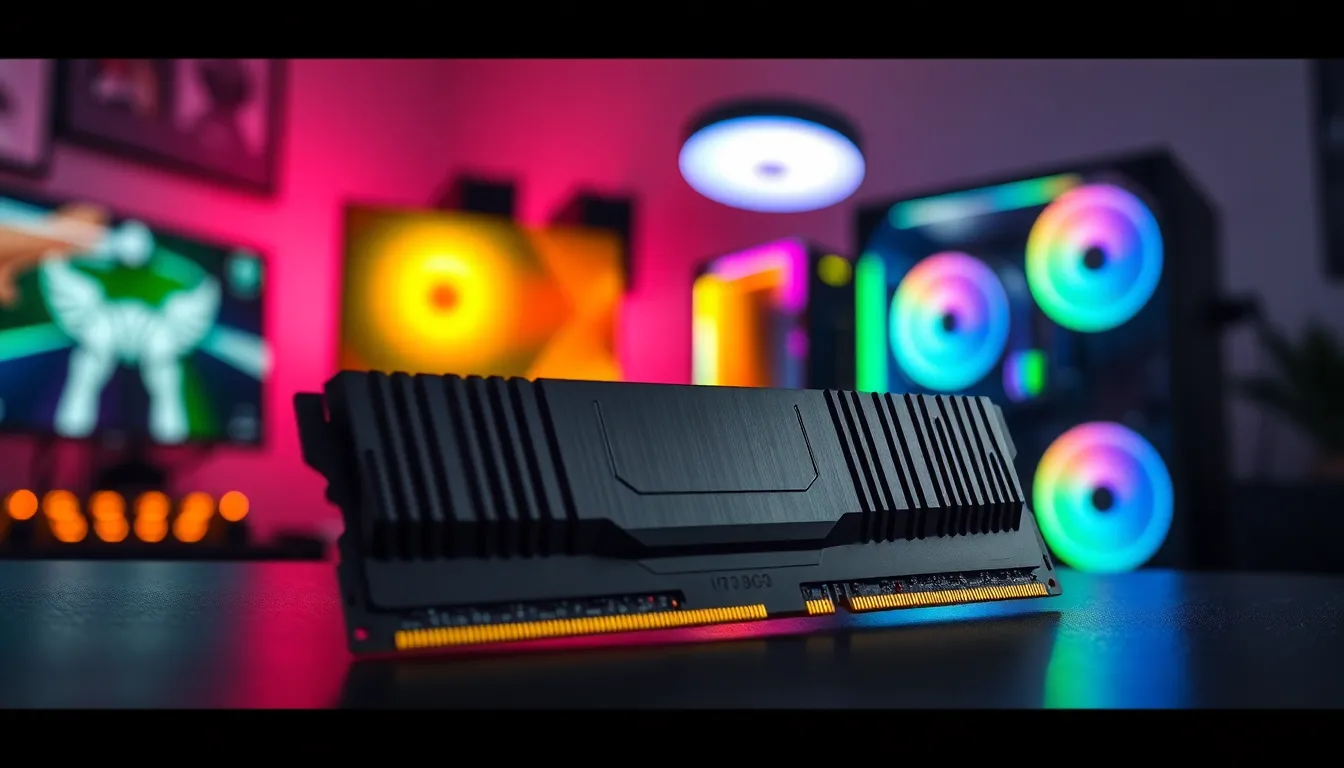
Increasing RAM can significantly impact gaming performance. Higher amounts of RAM provide necessary resources for smoothly running demanding games and multitasking efficiently.
How RAM Affects Game Performance
RAM directly influences frame rates in various scenarios. Insufficient RAM often results in stuttering and lag, concerns that hinder immersion. Games that require substantial memory benefit from increased RAM, leading to a smoother gameplay experience. Upgrading RAM addresses issues like slow loading times and frame drops in memory-intensive situations. Gamers with higher RAM capacity often report fewer interruptions, resulting in more consistent FPS rates. Combining adequate RAM with a capable CPU and GPU maximizes gaming performance.
The Importance of RAM Speed
RAM speed also plays a crucial role in gaming performance. Faster RAM allows quicker data access, assisting CPUs in efficiently processing game data. Increased frequencies enhance overall system responsiveness, affecting FPS positively. Low latency in RAM contributes to better frame rates, reducing potential bottlenecks in performance. When selecting RAM, gamers should prioritize both capacity and speed to achieve optimal FPS. Balancing these factors ensures that systems can handle demanding graphics and multitasking seamlessly.
Limitations of RAM in Improving FPS
Upgrading RAM alone doesn’t guarantee improved FPS in gaming. Several other elements contribute to overall performance.
Other Factors That Influence FPS
Graphics card performance holds significant importance. It often determines how well a game renders visuals. CPU capability affects how quickly game data processes. Game optimization plays a role; poorly designed titles can lead to lower FPS regardless of system specifications. Temperature also matters, as overheating components can throttle performance. Network connectivity impacts online gaming as well; lag can distort framerate quality. Adjusting in-game settings like resolution and texture quality can make a substantial difference too.
Minimum vs. Recommended RAM for Gaming
Minimum RAM standards typically provide basic functionality for games. Many modern titles recommend at least 16 GB for optimal performance. Gamers may encounter limitations with only 8 GB, especially during intensive scenarios. Recommended RAM levels ensure smoother gameplay, especially with multitasking applications running in the background. Meeting or exceeding these recommendations stabilizes frame rates and supports demanding graphics. Investing in adequate RAM prevents slowdowns during intense gaming sessions and enhances the overall experience considerably.
Upgrading RAM: Is It Worth It?
Gamers often consider upgrading RAM to improve performance. Increased RAM can enhance gameplay, especially during memory-intensive scenarios.
When More RAM Makes a Difference
More RAM significantly benefits systems running demanding games. High-capacity memory allows for better multitasking, resulting in smoother performance. Games with expansive worlds or complex graphics require additional memory for optimal operation. When RAM capacity exceeds 16 GB, users often notice a marked increase in FPS, as there’s enough space for quick data access. Additionally, modern titles frequently recommend more RAM, reinforcing its importance for high-performance gaming. The right amount of RAM enables seamless game streaming and background application usage, minimizing lag.
Signs You Need More RAM
Noticing stuttering or sluggish performance indicates insufficient RAM. Often, gamers experience frame drops during intense gameplay, suggesting a memory shortage. Furthermore, prolonged loading times can signal the need for additional RAM. When multitasking with demanding programs, users may find their systems become unresponsive or crash. If system requirements for recent games surpass available memory, an upgrade becomes necessary. Video editing or graphic design tasks may also reveal RAM limitations, impacting workflow efficiency. Identifying these signs can help gamers make informed decisions about RAM upgrades.
Upgrading RAM can provide a noticeable boost in gaming performance particularly in memory-intensive scenarios. For gamers experiencing stuttering or lag during gameplay increasing RAM often leads to smoother visuals and improved responsiveness. However it’s essential to remember that RAM is just one piece of the puzzle. Factors like the graphics card and CPU also play critical roles in determining FPS.
To maximize gaming performance it’s crucial to consider both RAM capacity and speed while also ensuring other hardware components are up to par. By investing in adequate RAM and addressing potential bottlenecks gamers can significantly enhance their overall experience. Recognizing the signs of insufficient RAM and taking proactive steps can make all the difference in achieving that sought-after seamless gameplay.

